General
Transport
People
Accomodation
Food & Drink
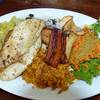 What is the local food like in Costa Rica?
What is the local food like in Costa Rica?
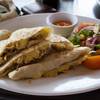 What local dishes to try in Costa Rica?
What local dishes to try in Costa Rica?
 What are some places to eat?
What are some places to eat?
 What can I eat in Costa Rica as a vegetarian?
What can I eat in Costa Rica as a vegetarian?
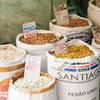 How much does the food cost?
How much does the food cost?
 Can I drink tap water in costa Rica?
Can I drink tap water in costa Rica?
 Is there tea and coffee culture in Costa Rica?
Is there tea and coffee culture in Costa Rica?
 Where to buy alcohol in Costa Rica and how much does it cost?
Where to buy alcohol in Costa Rica and how much does it cost?
 What alcoholic drinks to try while in Costa Rica?
What alcoholic drinks to try while in Costa Rica?
 What are the restrictions regarding alcohol consumption?
What are the restrictions regarding alcohol consumption?
Sightseeing
Legal
Money
Safety & Health
Family travel
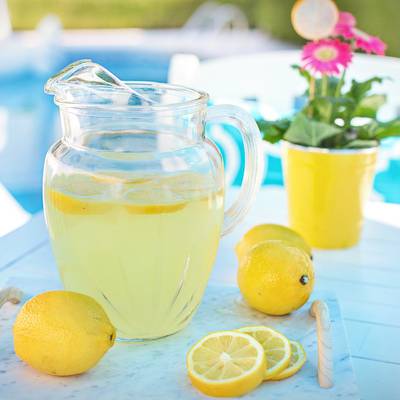
What soft drinks are available?
Agua de sapo. It’s unlikely you’ll spot agua de sapo on a beverage menu in Costa Rica, but if you have a chance to try the cold drink (most likely if you find yourself on the Caribbean side of the country), give it a go. Despite it’s awful-sounding English name (“toad water”), agua de sapo is quite delicious. It resembles iced tea with a significant amount of ginger mixed in, and has a slightly sweet taste thanks to the addition of tapa de dulce (unrefined cane sugar).
Agua de tamarindo. Somewhat acidic is agua de tamarindo (“tamarindo water”), the namesake drink of the beach town of Tamarindo, which is home to several tamarind trees. This drink is built from pulp contained in the tree’s peanut-like pods, and is rather refreshing albeit quite tart. Order it at Costa Rican restaurants (several traditional soda restaurants serve it).
Agua dulce. Anyone who visits Costa Rica quickly learns that coffee is the country’s beloved drink. But few people know that agua dulce (“sweet water”) claims second place. It's comprised of boiled tapa de dulce (unrefined cane sugar) and water. Not unlike coffee, agua dulce is served warm, is consumed throughout the day, and is sometimes ordered con leche (“with milk”). Though it’s unlikely you’ll encounter agua dulce being served in a touristy restaurant, some traditional soda restaurants and hotels can prepare the drink upon request.
Batidos. Of the many things to drink in Costa Rica are blended fruit batidos (“smoothies”). They’re fresh, delicious, and healthy, assuming processed sugar or syrups aren’t added. Batidos are most often ordered con agua (“with water”) or con leche (“with milk”). Batidos con agua look and taste like slushies: they’re watery and icy. Batidos con leche are a lot like fruity milkshakes: they’re thick, creamy, and usually have a bubbly froth on top. Batidos assume the flavor of the fruit(s) that comprise the blend. Most fruits available in Costa Rica make great smoothies, including bananas, pineapple, mangoes, papaya, strawberries, blackberries, guava, and guanabana. Nearly every restaurant in Costa Rica serves batidos of these kinds, though specialty cafes and health restaurants offer creative smoothie blends, like blackberry and ginger; honey and melon; pineapple and mint; banana and date; and more mouthwatering concoctions.
Chan. Comprised of fruit juice (of any kind) and soaked chia seeds, the beverage is loaded with antioxidants, fiber, and protein, not to mention a range of vitamins and minerals. Be forewarned, chan is an acquired taste. When cooked, chia seeds split open and a gelatinous casing forms around each seed. The casing is what causes the chia seeds to float in the drink. It’s also what gives chan an unexpected, gummy texture. If you’ve ever consumed tapioca balls in bubble tea, the cooked chia seeds in chan provide a similar texture, albeit in a much smaller form. To try chan in Costa Rica, order it from a traditional soda restaurant.
Horchata. If you fancy a creamy beverage, try horchata. The white, milk-like drink is a thick shake made from rice that has a potent but pleasant cinnamon flavor and aroma. As a beverage commonly consumed by Ticos, horchata can be ordered at most restaurants around the country.
Jugo. Jugo (juice) in Costa Rica probably isn’t unlike the juice you consume at home, except that it’s wildly fresh. You can get juice in all kinds of flavors there, including apple, orange, mango, pineapple, papaya, and more. You may hear juice referred to in Costa Rica as a bebida natural (“natural drink”) or a refresco natural (“natural refreshment”). It’s most common (and typically cheapest) for juice to be prepared with natural fruit and water, but on occasion, processed juice made from concentrate or powders may be served.
Pipa fria. Drinking pipa fria – chilled coconut water – direct from the coconut is a must-have Costa Rica experience. The watery content is refreshing, affordable, and has a light coconut taste. Depending on where you buy it, you’ll pay 500-1,000 CRC (1-2 USD) for the delicious drink. Pipa fria doesn’t come from the type of coconut that’s brown, fibrous, and produces sweet flesh (sometimes called “meat”), it comes from a type of green (sometimes yellow) coconut loved for its juice. Palms that contain these types of coconuts can be seen along Costa Rica’s Pacific and Caribbean coasts. It should come as no surprise, then, that you can buy pipa fria in Costa Rica from beach vendors. You may also come across locals selling pipa fria alongside highways; in town parks; at entrances to national parks and other popular attractions; and at farmers markets, especially in or around beach destinations.

How do I use ATMs in Costa Rica?

What can I bring home from Costa Rica?
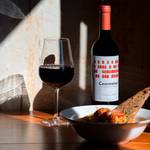
Where to buy alcohol in Costa Rica and how much does it cost?

What legal problems might I face in Costa Rica as a foreigner?
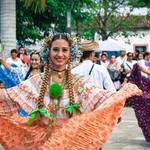
What are the Costa Rican people like?
